Dataforce finds VW and Ford must significantly reduce CO2 emissions
According to Dataforce, of all the OEM groups with combustion engines in their model range, only Geely (Volvo, Polestar, etc.) and the SAIC Group (MG) are currently below the new threshold value of 93.6 g/km. After them, Toyota (105 g/km) and BMW (106 g/km) will have to make comparatively modest reductions, but all others will have to make considerable efforts and sell more electric cars.
This applies in particular to the Volkswagen Group and Ford. According to the analysis, VW is currently at 123 g/km, and Ford is even at 125 g/km. By comparison, other high-volume manufacturers such as Stellantis (113 g/km), Renault-Nissan-Mitsubishi (114 g/km), Toyota (105 g/km) and the Hyundai Motor Group (108 g/km) are in a better position – but are all still well above the 93.6 g/km target for 2025. Among the German premium brands, Mercedes-Benz is only two grams above BMW at 108 g/km – Audi is counted as part of the VW Group.
Nevertheless, all manufacturer groups are close to or mostly below their 2024 targets – seven out of ten are already below them. “The VW Group, Renault-Nissan-Mitsubishi and Ford are slightly above, but should be able to achieve the 1-2 g/km reduction still required in the second half of the year,” estimates Dataforce. As the penalties for exceeding the limit are calculated at 95 euros per gram of CO2 per vehicle, this can quickly lead to fines totalling several hundred million euros.
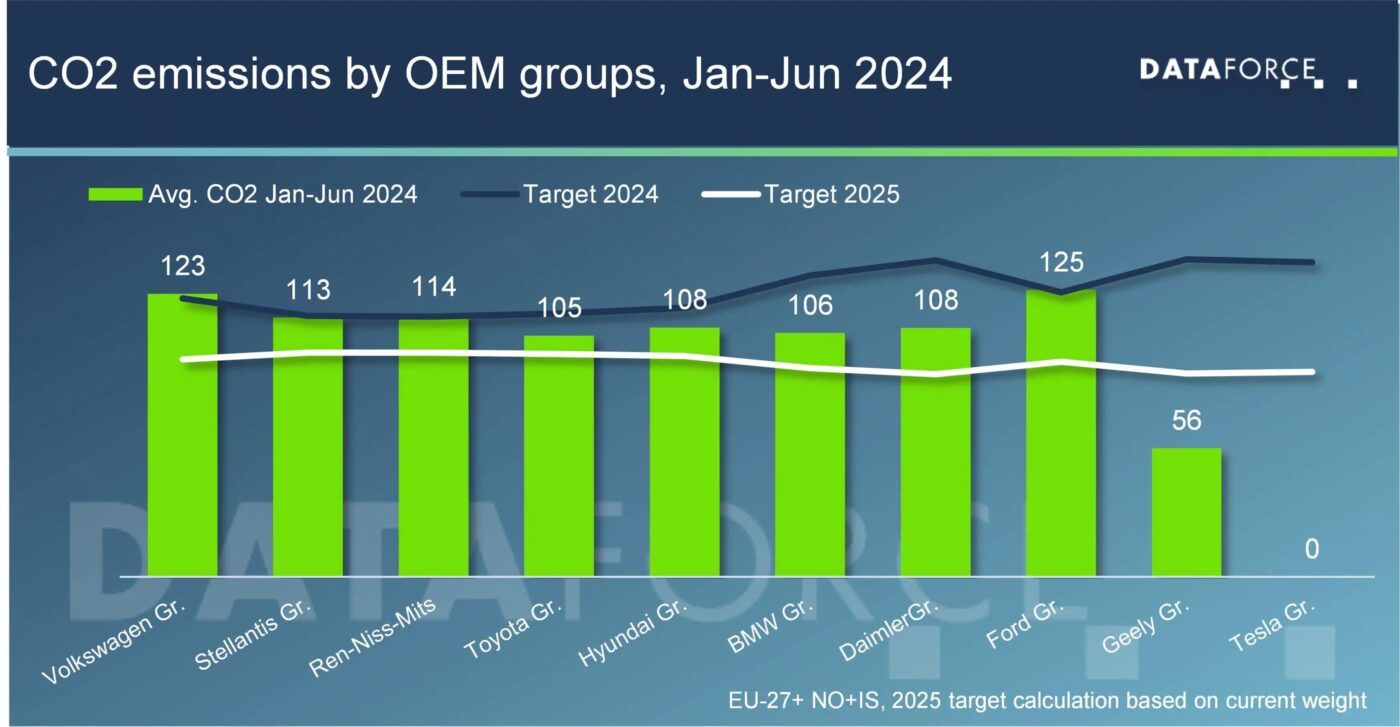
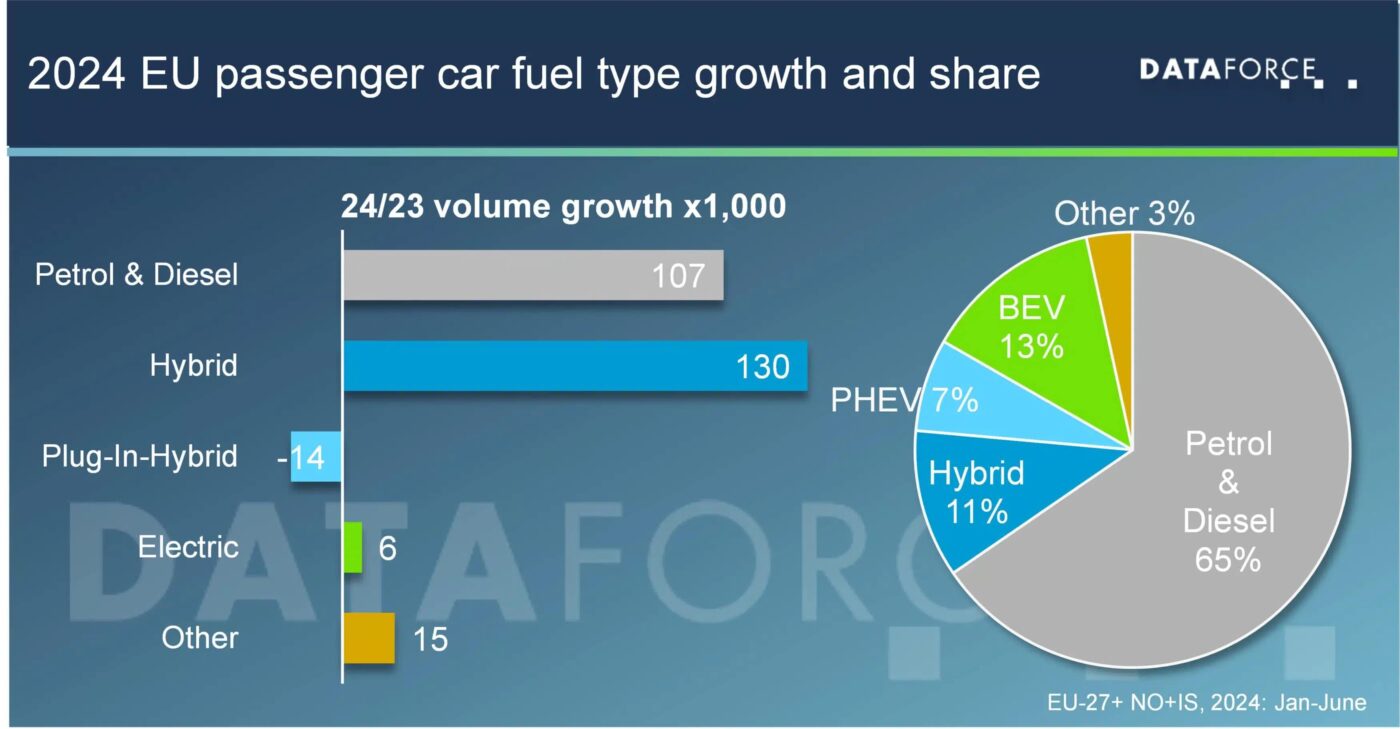
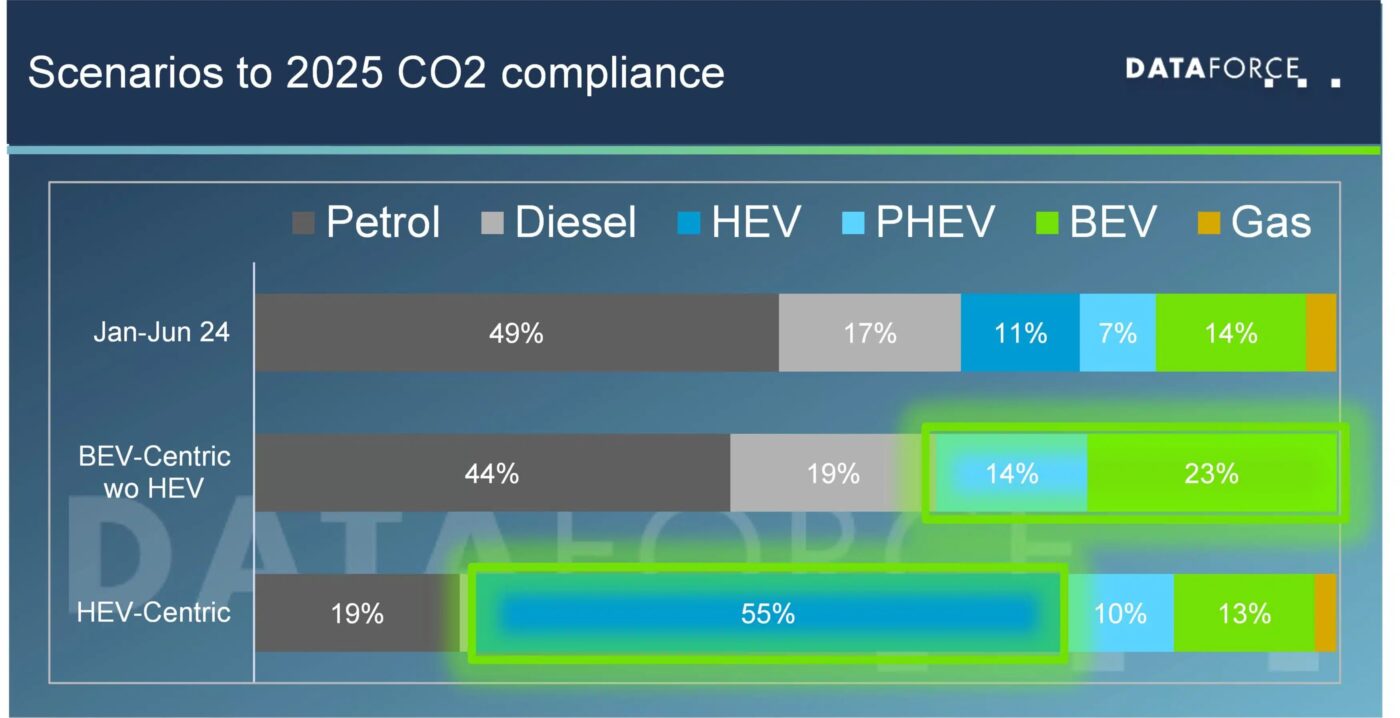
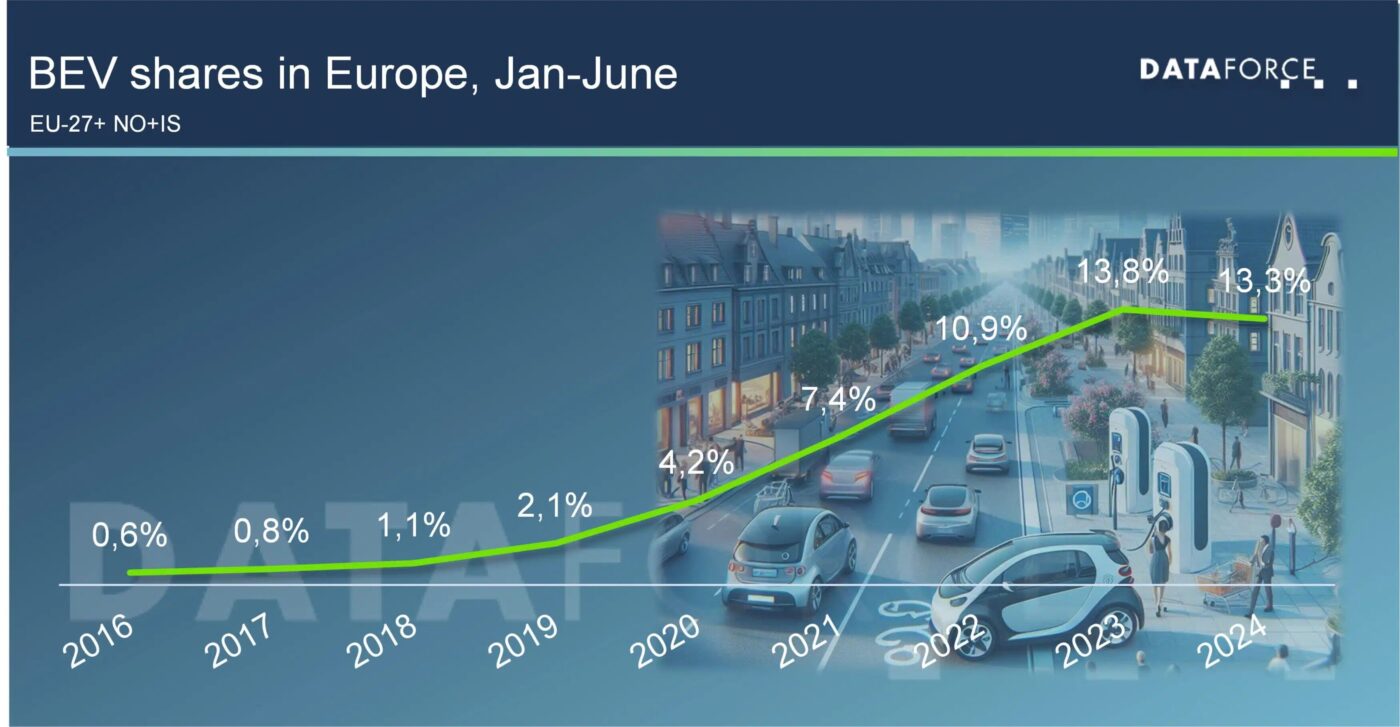
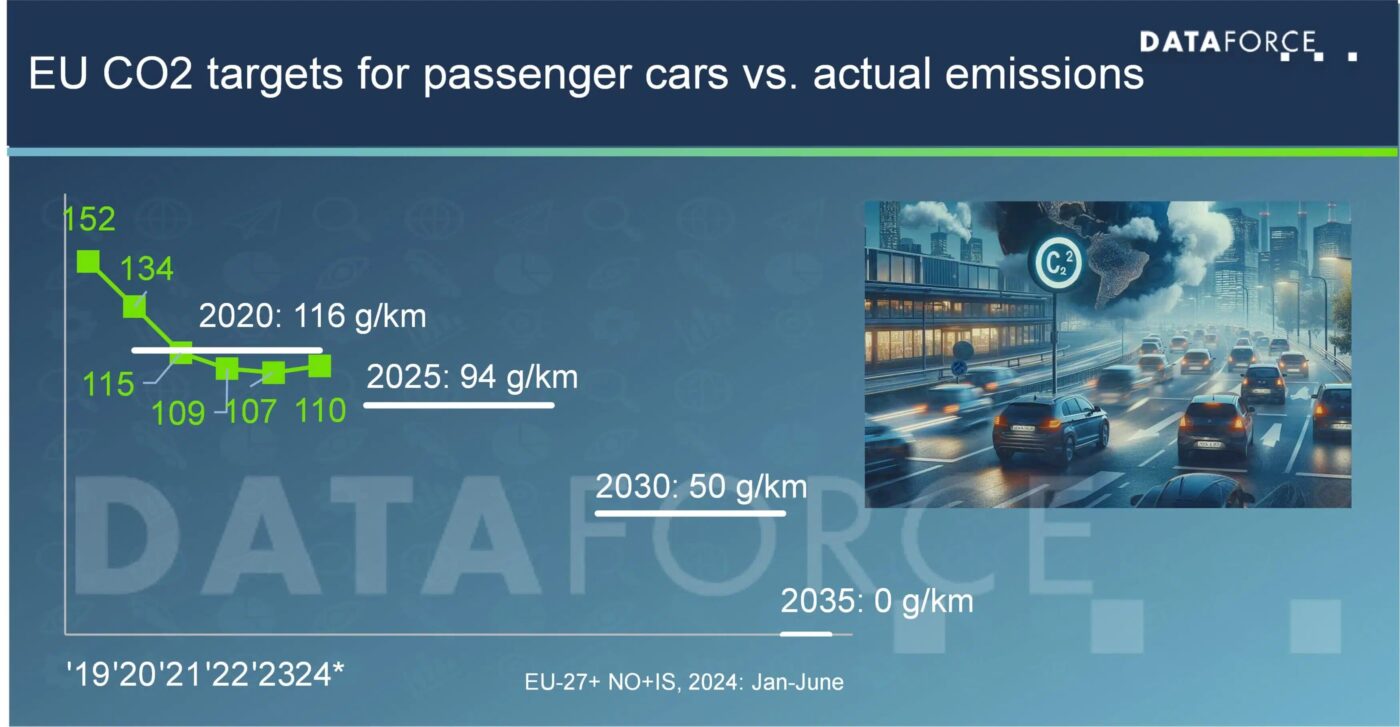
However, only Geely (with a certain proportion of combustion engines at Volvo) and pure electric car manufacturers such as Tesla are currently undercutting the 2025 target. In other words: the situation is completely different, most manufacturers have to reduce – and in some cases significantly. At VW and Ford, the individual targets for 2024 have been raised to 121 and 124 g/km respectively in view of the “heavier than average vehicles,” which offers a certain amount of leeway. “However, this weight adjustment will be omitted in 2025 as the weight factor in the equation becomes negative,” the Dataforce experts wrote.
In order to achieve this more or less significant reduction, it will come down to increasing electrification of the vehicles sold – depending on the manufacturer. Dataforce provides a small example calculation: “Based on current fuel type-specific emissions, an OEM without full hybrids in its portfolio will need 37% of BEVs and PHEVs in its sales mix. With full hybrids, the task becomes seemingly easier. In a scenario with a 55% HEV share, the necessary BEV/PHEV proportion is reduced to 23%. However, OEMs with a heavy focus on HEVs typically sell fewer BEVs.”
To briefly summarize the manufacturers’ situation; BMW achieved a BEV share of 17.4 per cent in the second quarter. In the VW Group, it was only 8.1 per cent in the same period. While BMW could therefore achieve the 2025 targets on its own with a moderate increase in BEV deliveries and a few hybrids, the situation is different for the Wolfsburg-based company. A significant increase is needed here in 2025. However, as many new models with a focus on volume are not planned until 2026, the current electric model series and the new electric models from Porsche and Audi based on the PPE will have to do the job next year.
Or VW will have to resort to the alternative of CO2 pooling. In the past two years, there was no great need for this; most recently, in 2021, the then FCA Group and Honda joined forces with Tesla to bring (total) fleet emissions below the limit. Dataforce expects the instrument to be revived in 2025, when manufacturers of pure electric vehicles will be able to sell emissions certificates to other groups.
Dataforce believes that a sufficiently high level of electrification is almost impossible to achieve “from the current perspective.” “However, electrification is not a linear process; it occurs in steps. In the past, the leap from 2019 to 2020 was surprisingly strong. The current setback is also influenced by the abrupt phase out of EV incentives in Germany, Europe’s largest BEV market by volume,” the press release states. In other words, there is still some hope of avoiding CO2 pools or fines. In addition, manufacturers have it in their own hands to increase sales of those models that have a positive impact on their fleet emissions through discount campaigns.
Dataforce also notes that it has become more difficult to convince additional customers to opt for BEVs instead of ICEs. “This will only work with changes in the price structure. The current drops in lithium and battery prices allow some price cuts through the supply chain, but OEMs will also need to cut costs elsewhere to stay profitable,” the experts say. “Scaling up production and replacing expensive NMC batteries with LFP batteries can be alternative options. OEMs are also likely to phase out promotions on ICEs and focus on BEVs.”
There is also another point: “Last but not least, smaller and more affordable models will help make the transition into the mass market.” At VW, however, the ID.2 small electric car has only been announced for the end of 2025; the model will probably not be available in larger numbers until 2026.

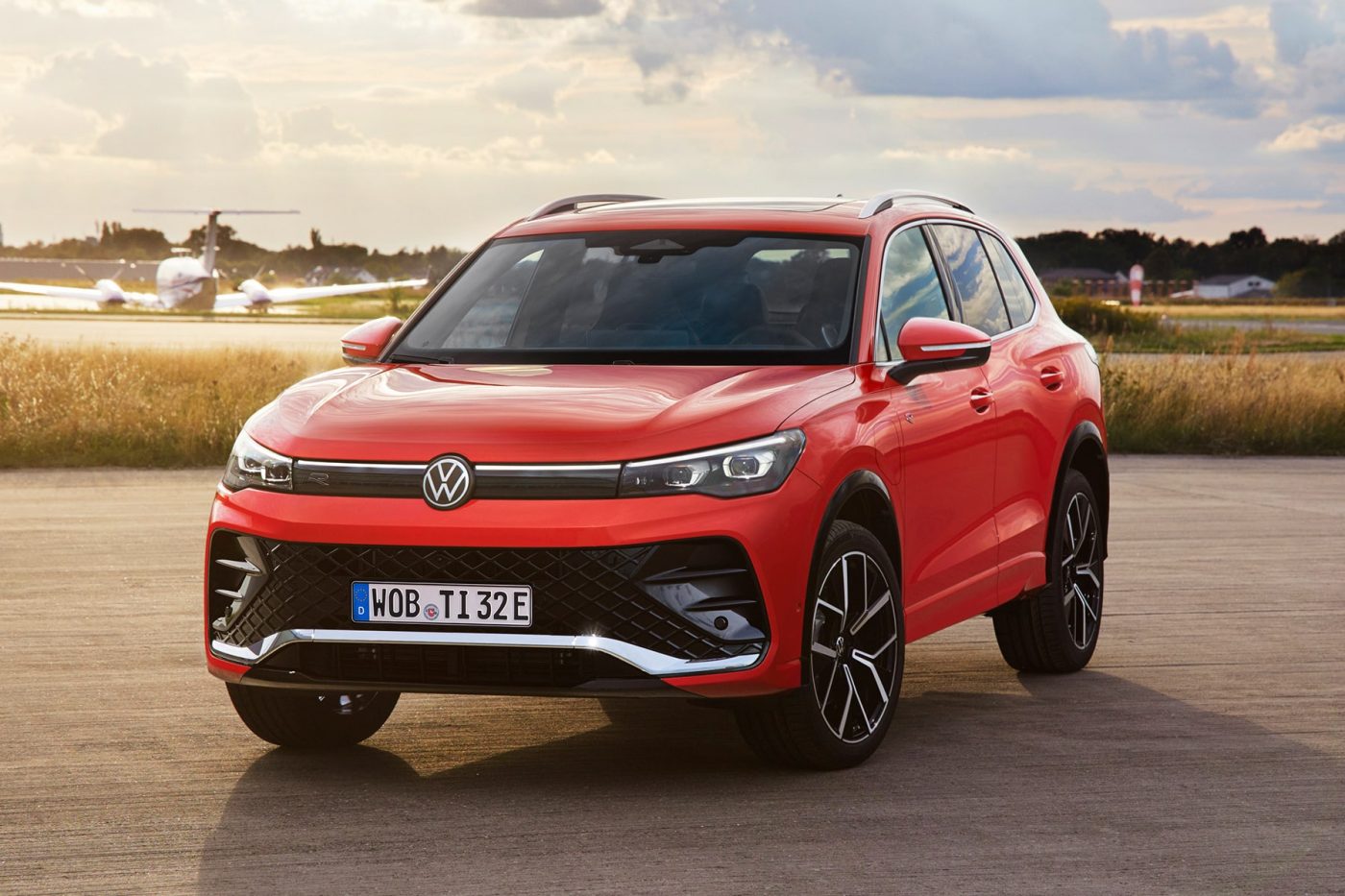



0 Comments